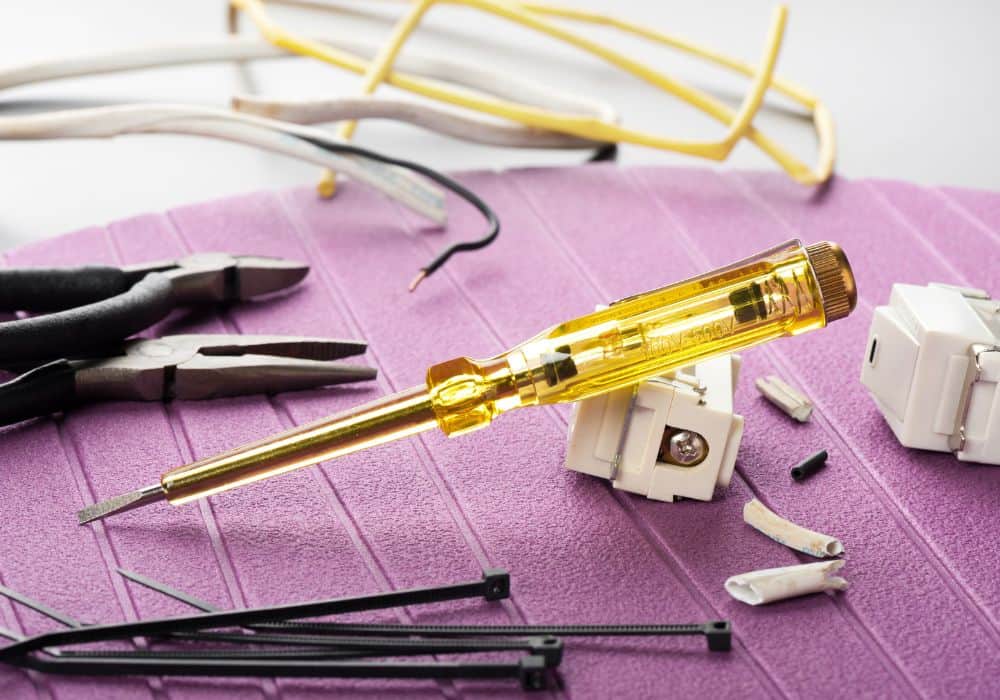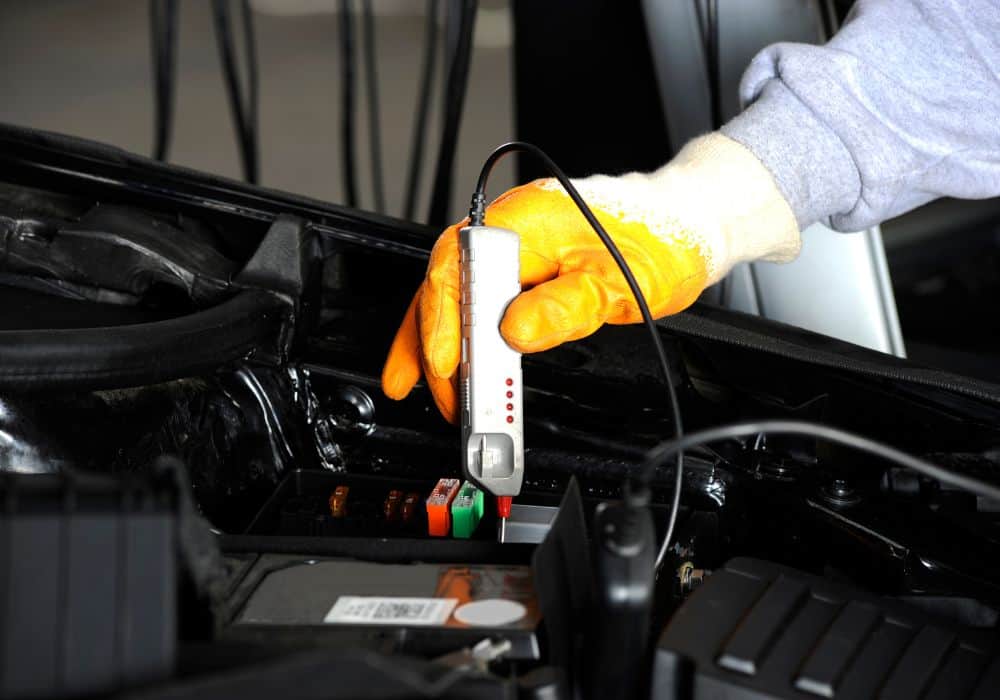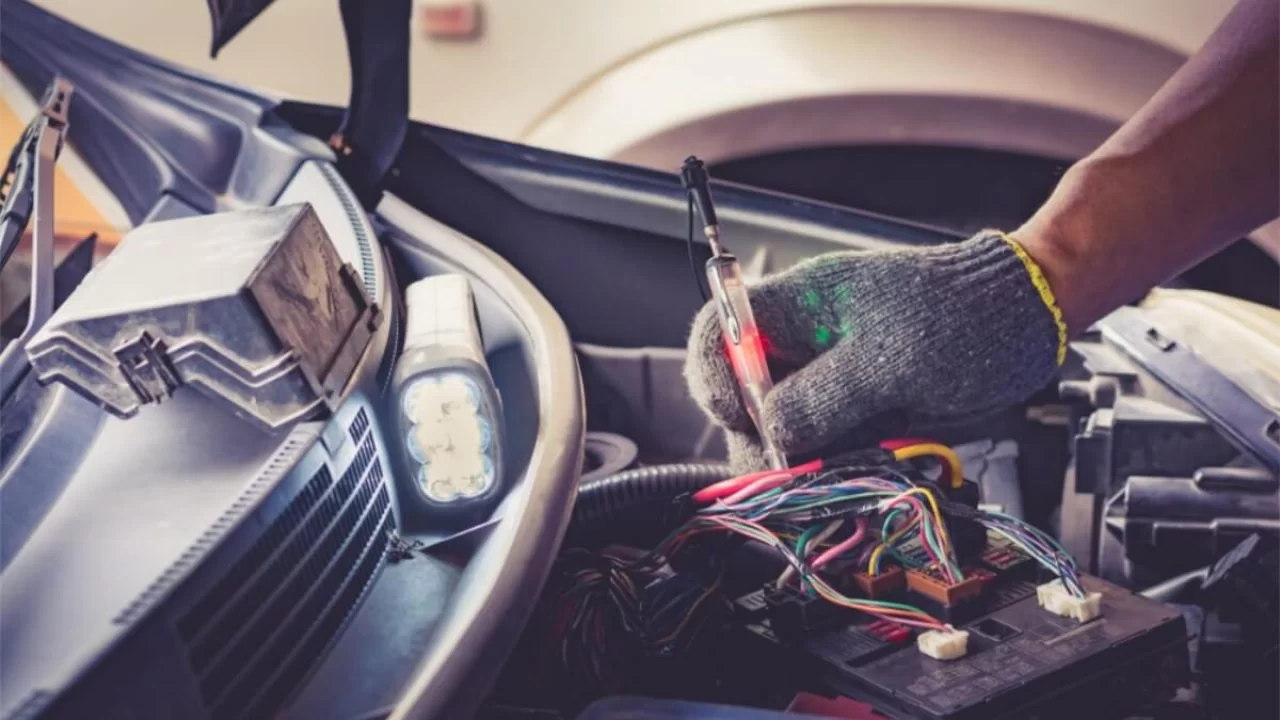Dealing with car issues is always a pain, but it’s worse when the issue sneaks up on you. Something as simple as a draw on your car battery catches you off guard and dashes any plans you have, and you’re left trying to diagnose the problem.
Luckily, test lights are fairly inexpensive and effective at diagnosing power draws on your car battery. Keep reading to learn how a draw on your battery affects performance and how to use a test light to solve your problems.
Table of Contents
- What is a Parasitic Draw on a Car Battery (and Why Does it Matter?)
- What are Test Lights, and How Can One Help?
- How to Use a Test Light to Check for Draw on a Car Battery?
- How to Use a Test Light to Determine Car Battery Draw Source?
- Fixing Parasitic Draw
- What if There’s No Draw on the Car Battery?
- Conclusion
What is a Parasitic Draw on a Car Battery (and Why Does it Matter?)
Parasitic battery drain is a nasty phenomenon that involves electrical components taking power, even after the vehicle is turned off and the component is disconnected. It’s annoying on a minor scale but causes bigger issues, such as:
- Detrimental effects on electrical components (such as your battery or alternator)
- Car dying while turned off
- Electrical issues while driving
Because this hints at malfunctioning parts, it’s important to address the issue as quickly as possible. This keeps your car operating in top form, and it prevents issues like leaving you stranded at the grocery store or wearing down components before their time.
What are Test Lights, and How Can One Help?

If you suspect a parasite in your system, a test light (also known as a test lamp or voltage tester) is one of the most simple and inexpensive ways to find your culprit safely.
A test light is a device that simply detects electrical current. While it’s not as versatile as similar tools, it’s sufficient to check for voltage. Test lights must meet certain standards to protect the user from accidental, all of which you want when working with suspect electrical components.
Make sure you avoid using low-end or homemade test lights for this task. They may save you a few dollars, but they usually lack the protection you don’t know you need (until you need it).
How Test Lights Differ From Multi-Meters
Multi-meters are more advanced and comprehensive tools for testing electrical components. They measure force (volts), resistance (ohms), and current (amps), and provide several other details, including:
- Capacity
- Frequency
- Conductance
While test lights are all you need for simple current checks, more complex issues benefit from the use of a digital multimeter. While you can purchase some multimeters for cheap, they’re still more expensive than a test light and more difficult to use.
How to Use a Test Light to Check for Draw on a Car Battery?
To check for a draw on a car battery with a test light, you only need the light, your car, and this guide.
Because you’re working with electricity, keep your area clear of conductive material and take care not to touch any exposed elements with your bare skin. Take your time identifying the source of your current draw to prevent disastrous accidents.
Visually inspect your test light prior to using it, paying close attention to compromised insulation or other damage to the tool.
Make sure the test light works before relying on it for diagnosis. Connect one end to your negative terminal, then touch the other end to your positive terminal. The test light should illuminate, and you can get down to business.
Step 1: Starting Point
Before you can determine the source of the problem, you need to set the stage. Turn off all your accessories and disconnect all devices from sockets in your car, including phone chargers or dash cameras.
Turn your car off and remove the key from the ignition. Ideally, your car is fully charged for this test. You can purchase a voltmeter to verify your battery sits at a healthy 12.6V. Charge it if needed, but be mindful of any issues you detect at this stage.
Pop your hood (and trunk, if that’s where your battery is), then close your doors and lock them (this prevents readiness checks that use battery power). To prevent locking yourself out, tape down your door switch and leave the door open.
Step 2: Locate Battery and Disconnect One Cable
If you already know where your battery is–great! You can move on to disconnecting the negative terminal.
If this is your first rendezvous with car maintenance and diagnostics, you might not know where exactly your battery is, and that’s fine. In most cars, the battery is located under the hood on either side.
Some cars, like Dodge Chargers, put the battery in the trunk to help with weight distribution.
Unscrew the clamp on one of your cables to remove it. Most people opt for the negative cable out of habit, but choose the one closest to you to prevent awkward maneuvering that might short your battery.
Step 3: Connect Your Test Light

To use your test light, attach the clamp to the terminal and then touch the other end of the test light to the cable that you just disconnected. This completes the circuit that you just broke.
If the test light illuminates, you now know that you have a power drain on your battery and you can move on to diagnostics.
If the test light does not illuminate but you’re still having problems with your battery, you need to figure out what the actual issue is for a speedy solution.
How to Use a Test Light to Determine Car Battery Draw Source?
Not only can you use the test light to check for draw on your car battery, but you can use it to help you determine the culprit of parasitic drain. This is easier if you have someone to help, but you can manage it on your own as well.
In short, you use the test light to verify the current while removing suspect fuses. If you pull a fuse and the light turns off, it means you broke the circuit and you now know that the component was drawing power.
Step 1: Locate Your Fuse Box
If you’re not sure where your fuse box is, check your vehicle owner’s manual or search online for a diagram. There are usually two, one under the hood and one under your dash near the steering wheel.
In this situation, it’s best to start with the fuse panel under the hood. This contains more fuses to almost every component in your vehicle, and you’re more likely to find your parasite here.
Most fuse boxes are thick, black cases obviously labeled as “fuses” and simple to open yet secure. You’ll know you’ve found it when you unearth an army of fuses on the inside.
Step 2: Pull Fuses

Unless you’re lucky, this is the tedious part. Go through each of your fuses, pulling them one by one, and check your test light each time to see if it goes off when you disrupt the circuit.
A fuse puller can save your fingers, but needle-nose pliers work fine in a pinch. Start with the fuses with lower amp ratings, working your way up to the higher ratings.
If the light stays on, move onto the next fuse. If you work your way through the box without the light switching off, find the fuse box under your dash and test those.
Step 3: Confirming Diagnoses
You know you’ve found the parasite when the test light turns off. Consult the fuse box chart to determine what system this fuse runs, and note any additional components that might be contributing to the draw (i.e. other fuses).
If you’re up to it, you can continue with the parasitic draw test. You’re unlikely to find two or more issues, but it’s better to diagnose multiple issues in the same setting than it is to repeat the process.
Fixing Parasitic Draw
To fix the issue, replace the suspect fuse and then flip all the switches that relate to that fuse.
You can test for a draw periodically to see if you’ve fixed the issue. If the light stays on, move down the circuit to address any faulty parts that may leech off your battery charge.
If you’re uncomfortable working with electricity, you can hand your car off to a professional for a safe repair. There’s a big difference between replacing a fuse and fixing poor wiring, and this is not something you want to mess up on.
What if There’s No Draw on the Car Battery?

If there’s no draw on your car, look to other issues with similar symptoms. This is as simple as accidentally leaving your headlights on and draining your vehicle’s battery, but more serious issues include:
- Loose battery connections
- Corroded battery terminals
- Extreme temperatures (with older batteries)
- Battery not charging while you drive
To prevent issues, make sure you address them as soon as a warning light pops up on your dash. You can test certain electrical components, such as your battery or alternator, tested at most auto parts stores.
Conclusion
A parasitic draw on your car battery may seem insignificant, but it’s important to address the issue before it gets any worse. While using a test light to check for the draw and its source, remember to:
- Turn off all electrical components
- Move thoroughly through the fuses
- Test each fuse
- Work through all components in compromised circuit
Do you suspect a draw on your car battery? Comment with your story, including any questions or tips!
